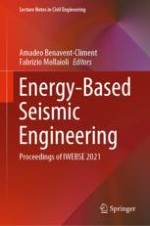2021 | OriginalPaper | Chapter
Energy-Based Design Process for Passive Control Structures Considering Torsional Effect
Authors : Sanghoon Oh, Seunghoon Shin, Bahador Bagheri
Published in: Energy-Based Seismic Engineering
Publisher: Springer International Publishing
Activate our intelligent search to find suitable subject content or patents.
Select sections of text to find matching patents with Artificial Intelligence. powered by
Select sections of text to find additional relevant content using AI-assisted search. powered by
